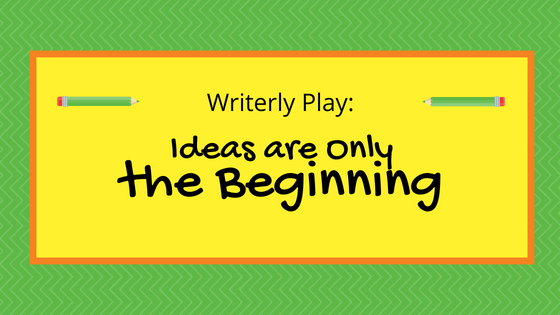Early in my career as a teaching artist, I learned that games are magical.
All one has to do to transform sluggish energy to excitement is walk into a classroom and speak that enchanted phrase, “Let’s play!” It didn’t matter if our focus was geometry, the law of gravity, or even grammar, as long as we played improvisational games, we completely skipped the teacher-student tug of war.
When we started “working,” however, lessons often took a turn. Some students rode the wave of excited energy past idea generation into the next steps of the thinking and writing process. Many did not. What if, I wondered, the entire lesson could be play?
Students are too savvy to be tricked by semantics. I couldn’t simply call the work “play” and hope to trick them. However, I knew if I could figure out this puzzle, the rewards would be well worth the effort. So, I studied game theory, the psychology of learning, the art of improvisation, and creative thinking tools. I experimented until I found a way to infuse play into every aspect of my teaching. To my delight, I found that while games do give us ideas, they have the power to do much, much more.
In the end, I realized we could approach the entire creative process as a game—a complex, surprising, challenging game with ever-increasing levels of growth.
The discovery has transformed both my teaching and my own creative work, as well. Writerly Play is the result of my 15+ year odyssey. It offers writers of all ages and development levels tools to individualize, map, and problem solve the creative process. Using the lens of story, writers explore The WHO, or their own creative persona. The WHAT has more than one layer: the project of the moment, the skill they’re developing, and the activity used to develop the skill. Those activities? You’ve guessed it. If they’re not outright games, they still have a playful feel. Finally, the WHERE helps us position our thinking. What mental space do we need to occupy to take the next step forward? Do we need to think study masterworks, collaborate, reflect, brainstorm, or analyze?
Picture the process of locating oneself in the creative process and setting the next few steps like traveling around a Clue game board.
It’s fun, and the fun is part of the charm, but don’t let the whimsy fool you. Writerly Play isn’t only fun and games. It’s a process to help writers make serious progress by mastering a wide range of creative and critical thinking skills.
At Society of Young Inklings, our mission is to help writers get the big ideas in their hearts and heads out onto the page.
One important way we do that is by empowering you, the amazing teachers who work with them every day, to overcome common sticking points. I’ve prepared a guide for you: Quick-Start to Writerly Play. It’s a ten-page introduction that will give you the big picture view of Writerly Play, and also offer you a few strategies you can try out right away. Grab your copy below.
What if your students hurried to the page, filled with confidence and ideas?
What if (without being prompted) they asked themselves, “I’m finished early. How can I use this extra time to improve my work?” What if when they felt blocked, the students and their peers had a tool to help them collaborate and navigate their way back to productivity?
What if all of those wins could happen without your having to teach by someone else’s script? What if all you needed was a Quick-Start Guide, plus a little creativity of your own? That’s the other beautiful thing about Writerly Play. It’s practical, easy to adapt, and an invitation for YOU to play, too. Writerly Play is as flexible as a theatre game. You can shape the approach to fit your own needs.
Here’s to you and your students and a year of writerly growth and joy. Grab your Quick-Start Guide to Writerly Play below and get playing!


